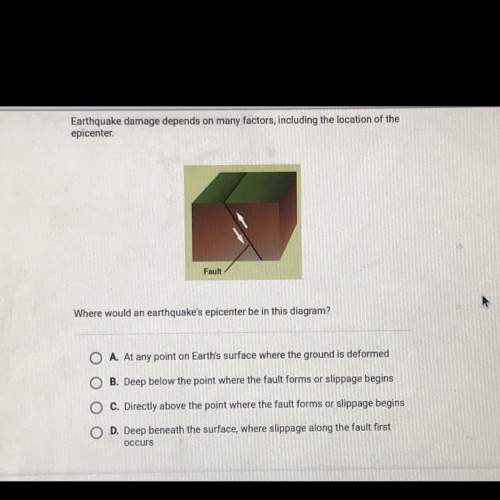
1 DNA unzips exposing nitrogen bases.
2 RNA nucleotides pair up with their corresponding DNA bases, copying the code.
3 mRNA carries the newly copied code out of the nucleus and to the ribosome.
4 tRNA brings the appropriate amino acids to the ribosome depending on the code.
5 A series of amino acids make up the newly formed proteins.
6 The proteins get to work!
Which of the above steps is Transcription?
Which of the above steps is Translation?
(Please answer ASAP)
Thanks for answering, I appreciate you for the help you have provided me! Enjoy your day/night.

Answers: 3
Another question on Biology

Biology, 21.06.2019 12:30
Me if the environment changes, what is the first thing a species will do to survive? question options: the species will suddenly move from the area the species will adapt to the changes the species will change the environment back the species cannot survive a change in the environment
Answers: 2

Biology, 22.06.2019 03:00
Where does all the water go? according to the environmental protection agency (epa), in a typical wetland environment, 39% of the water is outflow; 46% is seepage; 7% evaporates; and 8% remains as water volume in the ecosystem (reference: united states environmental protection agency case studies report 832-r-93-005). chloride compounds as residuals from residential areas are a problem for wetlands. suppose that in a particular wetland environment the following concentrations (mg/l) of chloride compounds were found: outflow, 60.4; seepage, 73.7; remaining due to evaporation, 26.4; in the water volume, 46.8. (a) compute the weighted average of chlorine compound concentration (mg/l) for this ecological system. (round your answer to one decimal place.) mg/l (b) suppose the epa has established an average chlorine compound concentration target of no more than 58 mg/l. does this wetlands system meet the target standard for chlorine compound concentration? yes. the average chlorine compound concentration (mg/l) is too high. yes. the average chlorine compound concentration (mg/l) is lower than the target. no. the average chlorine compound concentration (mg/l) is lower than the target. no. the average chlorine compound concentration (mg/l) is too high.
Answers: 3

Biology, 22.06.2019 04:10
Anne, an intern in a microbiology lab, was observing the characteristics of various specimens of protists. match each specimen to the category of protist to which it belongs.
Answers: 1

Biology, 22.06.2019 07:30
In the respiration-photosynthesis cycle shown above, what are the products of cellular respiration that belong in box 2?
Answers: 3
You know the right answer?
1 DNA unzips exposing nitrogen bases.
2 RNA nucleotides pair up with their corresponding DNA bases,...
Questions











Medicine, 05.08.2020 19:01












